Chicks are very fragile during the first few weeks of their life, so sound management is very vital to keep flock healthy. It should be noted that no matter the quality of the chicks supplied/procured and the soundness of management, mortality cannot be totally avoided in a flock. A mortality of between 1-5% is considered normal but anything higher than this should alarm the farmer. High mortality is indicative that all is not well with the flock and the farmer must take prompt appropriate action to stop further losses as failure to do so might cost the farmer his/her investment.
Early chick mortality can be caused by many factors ranging from genetic, to management, nutritional and disease causes.
GENETIC CAUSES
There are many lethal gene mutations in birds, most of which cause death during the incubation period and first few days of life because such chicks find it difficult to survive. Chicks with genetic abnormality rarely end up on the farm because these would have been removed during sorting at the hatchery.
MANAGEMENT CAUSES
Poor management is often one of the most important causes of early chick mortality. Sound management is very vital to the survival and performance of any flock. With bad management, chicks sourced from reliable sources will perform poorly might never manifest their full genetic potentials.
Some of these management blunders are;
High brooding temperature: High brooding temperature is very detrimental to chicks’ health and growth. A flock subjected to too much heat become dehydrated and show less interest in feed rather they take more of water to replace the lost body fluid. Due to this reduced interest in feed, the growth of the flock is drastically affected. Water loss of up to 10% will result in death. Also high brooding temperature causes pasted vent (i.e feces are stalked around the vent area causing blockage of the vent ultimately resulting in deaths because of chicks’ inability to pass out waste from the body).
Low brooding temperature: Low brooding temperature causes chilling. Prolonged exposure to cold can cause poor development of the immune system making the flock susceptible to disease agents. Also flock exposed to cold huddle together to conduct heat from one another all in the bid to stay warm. Huddling causes suffocation which ultimately result in mortality if not timely attended to.
To prevent problems associated with wrong brooding temperature, it is advisable that the farmer warms up the brooder to the recommended brooding temperature few hours before the chicks’ placement. Also the farmer must ensure that recommended brooding temperature for the different ages is maintained all through the brooding period. Also, close monitoring is vital to ensuring that the flock is exposed to even temperature all through the day.
High relative humidity: High relative humidity in brooding house causes the dampness of air and of litter material hence facilitating the growth of micro-organisms causing infections.
High stocking density: High stocking density can pose serious challenge to a flock because the bedding material becomes wet easily making it a suitable medium for microbial growth and multiplication. Inadequate feeding and watering spaces are also part of the problems caused by overcrowding. This will result in starvation mostly affecting the small members of the flock. Another challenge posed by overcrowding is unhealthy competition for space, water and feed and this can precipitate cannibalism/pecking within the flock. Also flock raised in an overcrowded pen, will be exposed to ammonia beyond the permissible level causing eyes and nasal irritation eventually making the flock more prone to respiratory and ocular challenges. Exposure of flock to 50ppm during brooding has been shown to depress broiler market weight by as much as 10%.
Litter contamination: Mortality in a flock can arise from using contaminated bedding materials. This contamination may be from the source (saw mill) but most times it arises as a result of bags used in bagging the bedding materials from the source to the farm. Bags used on other farms or for older flock on same farm must not be used in bringing in bedding materials for chicks. New bags or properly disinfected bags should be used for this purpose. Also some farmers use saw dust for brooding. This should be avoided as much as possible because chicks can mistake saw dust for feed and picking up this in good quantity will result in gastro-intestinal impaction ultimately resulting in death.
Wrong or inadequate feeders and drinkers: Chicks have feeders and drinkers that are specifically designed for them. These are designed to facilitate easy feeding and drinking with minimal effort. Wrong feeding and drinking equipment will affects flocks performance as this will expose them to daily stress and also result in feed wastage and water spillage resulting in wet litter which is a suitable condition for disease outbreak. Also when the right but inadequate number of feeders and drinkers are used, it causes unhealthy competition among the flock resulting in starvation of the weak/small members of the group and precipitation of social vices among the flock. As a rule of thumb, one chick feeder will serve 50 chicks likewise one chick drinker. The number of chicks to a feeder/drinker should be reduced as the flock advance in age.
Poisoning: Poisoning can cause serious problem for chicks. Depending on the type, dose and duration of exposure, its effect could be sudden and catastrophic. Poisoning could be from feed (mostly mycotoxins), generator exhaust, herbicides and insecticides, disinfectants etc.
Operational injuries: Chicks can sustain injuries from poor handling during routine farm procedures like de-beaking, vaccination via injection, transportation from brooding pen/farm to rearing pen/farm or as a result of unprofessional execution of any of these exercises.
Predators: A good brooder must be rat and cat proof. Cats cause direct mortality because they hunt and kill chicks and also cause stampeding in the flock which results in more deaths than that killed by cats. Rats on the other hand, causes both direct and indirect mortality as they sometimes kill and spread disease agents from one farm to another. Also they defecate and urinate in the feed while stealing from the flock thereby contaminating their feed. Rats have been known to spread diseases like, salmonella infection (pullorum and fowl typhoid), E. coli, fowl cholera etc.
NUTRITIONAL CAUSES
Good nutrition means giving a balanced diet to a flock in the right quantity evenly distributed among the flock. Good nutrition goes beyond providing good feed alone, it also entails providing adequate clean and disease free water to flock.
Water: Water plays an important role in maintaining the health and performance of the birds. It is the highest nutrients consumed by birds on a daily bases and this makes it the most important vehicle for disease agents entry into the body. It acts as a medium for digestion of feed consumed and medium for transportation for end products of digestion. It also plays a vital role in maintaining body temperature. Water plays an important role in weight gain of broiler because over 60% of the entire body mass is mass is made up of water. Water starvation causes mortality faster than feed starvation. Good water must be colorless, odourless, tasteless and disease free.
Vitamins deficiencies: Vitamins are very essential parts of poultry diets. They take part in vital body processes like metabolism, growth and development, reproduction, repair of worn out tissues; they serve as antioxidants, take part in enzymatic actions, etc. They are divided into two (2) major groups: water soluble vitamins and fat soluble vitamins.
The water-soluble vitamins include vitamin C and the B vitamins. The B vitamins include vitamin B12, biotin, folacin, niacin, pantothenic acid, pyridoxine, riboflavin, and thiamin. The B vitamins are involved in many metabolic functions, including energy metabolism. Poultry can make vitamin C, so there is no dietary requirement established for this vitamin. Vitamin C supplementation, however, has been shown to be useful when birds are stressed especially during hot season.
The fat-soluble vitamins are A, D, E, and K. Vitamin A is required for normal growth and development of epithelial tissue (skin and the linings of the digestive, reproductive, and respiratory tracts) and reproduction. Vitamin D3 is required for normal growth, bone development, and eggshell formation. Vitamin K is essential for blood-clot formation.
Vitamin B2 (riboflavin) deficiency causes curled toes syndrome in chicks. Vitamin A deficiency causes weakness and gives the feather a ruffled appearance. It causes drop in egg production, reduced hatchability (in breeders), and embryonic mortality increases. As egg production declines, there will likely be only small follicles in the ovary, some of which show signs of hemorrhage. A watery discharge from the eyes may also be noticed. The most popular effect of vitamin E deficiency is encephalomyelitis popularly known as crazy chick syndrome. Vitamin E combined with selenium has been shown to be a libido booster in breeder flock. Vitamin B6 deficiency causes retarded growth, dermatitis, and anemia.





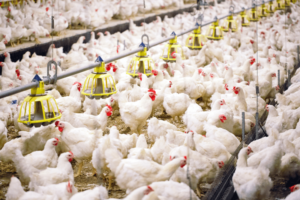
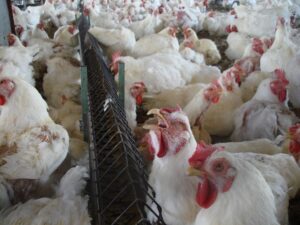
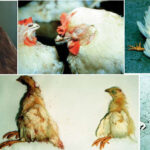
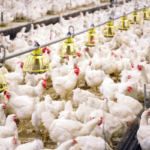
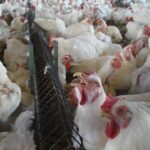


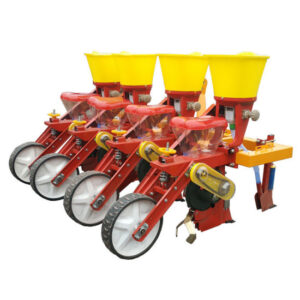
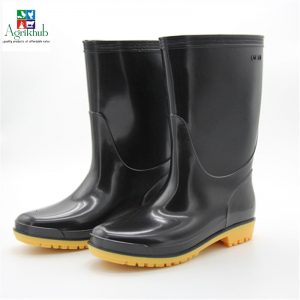

Nice post. I learn something totally new and challenging on blogs I stumbleupon every day.
It’s always helpful to read content from other writers and practice a little something from other web sites.
my site :: best CBD oil for dogs
Thanks for reading